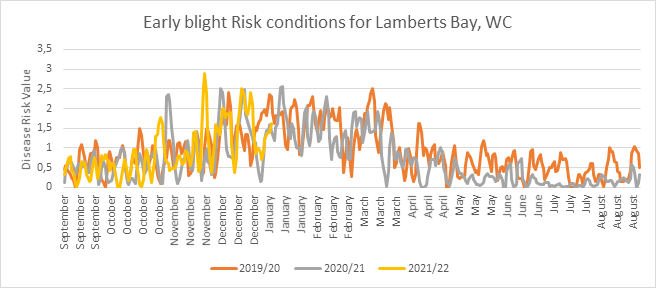Prevention is better than cure. That is an old saying which remains relevant today, especially when it comes to diseases on potatoes. It is for this reason, that emphasis is placed on the preventative control of diseases.
This is not sales talk: laboratory trials conducted with SDHI-products have shown to have less than 50% control of early blight on potatoes even when application was done 2 days after inoculation. At this stage no symptoms have been shown yet. Preventative control of early blight on potatoes is therefore extremely important for effective control.

Another challenge for (potato) farmers today is rising input costs. It is very true for potato farmers where production costs have increased tremendously over the last decade, with produce prices remaining relatively constant. In the current conditions, unnecessary applications of fertilizer, pesticides or other inputs can simply not be afforded and maximum return on investment should be realised.
The question is then: how do you prevent unnecessary inputs but still manage diseases preventatively?
Syngenta, as a leading crop protection business in South Africa, has recently added a service for potato producers which warns growers of conditions conducive for disease development. The diseases included is early and late blight on potatoes.
The services combine data from weather forecasts and disease risk models to create warnings for certain weather stations or areas around a weather station.

Producers can register for the service on the Syngenta website where they can choose for which months they want to receive alerts, (as there is no reason to receive warnings when you don’t have a crop growing) for each weather station they want to receive alerts for. Alerts are then sent out on Mondays and Thursdays with a 5-day risk forecast. When no risk is expected for the next 5 days, no warning will be received. Alerts can be received via email or WhatsApp and also includes other information like spraying conditions, etc.
For any queries your Syngenta distributor or sales manager can be contacted, or you can send an email to andre.labuschagne@syngenta.com









